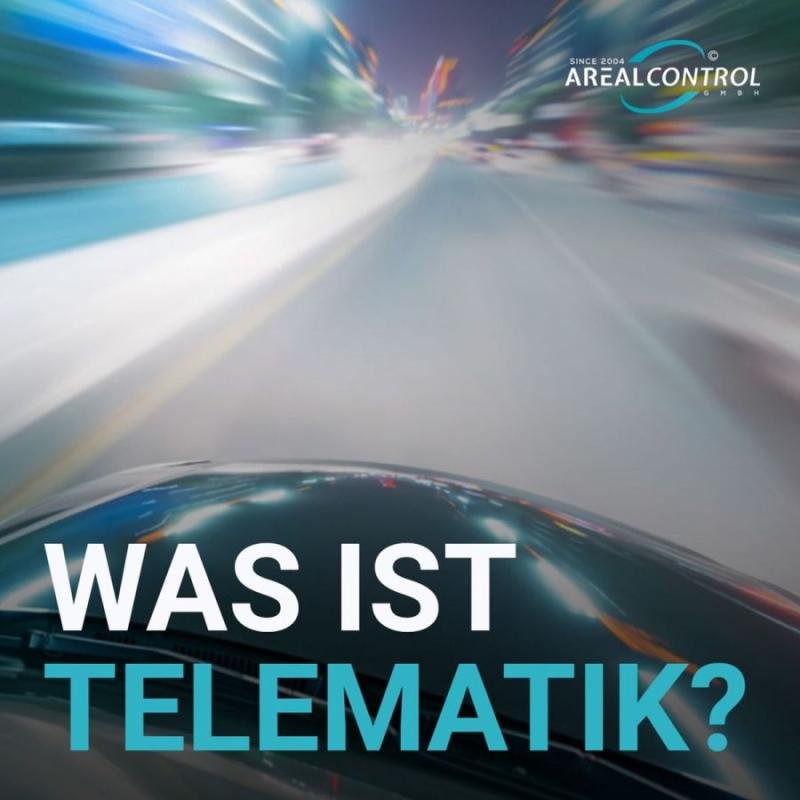Telematics is revolutionizing the management of vehicle fleets and ushering in an era of unprecedented operational intelligence.
This technology combines telecommunications with vehicle systems and data analytics to transform fleet operations. Gone are the days of blind spots in vehicle performance and driver behavior – modern businesses are now using real-time data streams to make smarter, more informed decisions. But what makes telematics such a powerful tool for fleet managers? By turning complex vehicle data into clear insights, companies can optimize their operations in ways previously unimaginable.
What is telematics? An overview
Telematics is an interdisciplinary field that combines telecommunications and vehicle technologies to monitor and control vehicles. At its core, telematics is based on devices with sensors that collect and transmit data such as vehicle performance metrics, GPS location and other vital information. These devices provide real-time information and enable companies to optimize their fleet management through improved navigation, diagnostics and vehicle tracking.
Many companies have quickly adopted telematics and are leveraging its capabilities to optimize vehicle usage and fleet operations. By processing vast amounts of data, telematics software provides fleet managers with a comprehensive overview of their operations, enabling precise monitoring and route optimization. The evolution of technology continues to redefine fleet management, offering companies smarter and more efficient solutions.
Understanding how telematics works
Telematics is based on a combination of GPS technology, on-board sensors and wireless telecommunications. These components work together to collect and transmit vehicle data, which is then processed by telematics software. GPS receivers, for example, enable precise vehicle tracking and route optimization, which reduces fuel consumption and improves efficiency. At the same time, on-board diagnostics monitor the condition of the engine and other key components, alerting managers to potential problems before they escalate. By analyzing this data, companies can identify trends, improve decision making and implement strategies to increase operational efficiency.
How can GPS technology be integrated into telematics?
GPS technology is the backbone of telematics and enables real-time vehicle tracking and navigation. By integrating GPS into telematics devices, companies can accurately monitor their fleets to ensure efficient route planning and asset management. This communication between vehicles and fleet managers promotes operational efficiency and driver safety and provides features such as detailed directions and real-time traffic information.
Consider the strategic advantage: each vehicle becomes a connected node in an intelligent network. By using GPS data through telematics, companies gain more than just location information – they gain access to a whole range of operational tools. From accurate ETAs to fuel consumption metrics, the system delivers actionable insights that inform business decisions.
One of the most powerful features of this integration is geofencing. By setting virtual boundaries on a digital map, fleet managers receive instant notifications when vehicles cross certain zones. This feature is especially valuable for companies with tight delivery windows or specific service areas. The result? Improved accountability, optimized operations and the ability to respond immediately to route deviations.
Telematics software for fleet managers
Telematics software is a powerful tool for fleet managers, providing a centralized platform for monitoring and managing vehicle operations. It processes the data collected by telematics devices and provides insights into performance, location and driver behavior. Key metrics such as fuel consumption, engine diagnostics and maintenance schedules are captured to ensure efficient vehicle operation.
The software also facilitates real-time communication between fleet managers and drivers, enabling instant updates and instructions. Advanced analytics enable managers to identify trends, uncover inefficiencies and implement strategies to optimize operations. In addition, telematics software supports regulatory compliance by generating detailed reports for audits and inspections. As technology advances, it remains essential for fleet managers looking to optimize their operations and achieve business goals.
Applications of telematics in companies
Telematics offers a wide range of applications, especially in industries that rely on vehicle fleets. In logistics and transportation, it enables real-time shipment tracking, ensures on-time deliveries and increases customer satisfaction. Route optimization reduces fuel consumption and environmental impact, while diagnostic functions help to maintain vehicle performance.
The reach of telematics goes far beyond traditional transportation. Construction companies use it to monitor the utilization of their machines and prevent theft. Agricultural businesses use telematics to optimize harvest schedules and track machines across vast acreages. Public transportation systems depend on these solutions to maintain reliable schedules and respond to changing passenger demands.
In the insurance sector, telematics has ushered in a new era of data-driven risk assessment. Insurance providers now offer usage-based policies that reward safe driving behavior with lower premiums. This approach benefits both insurers and customers through more accurate risk profiles and fairer pricing models.
How do fleet management systems benefit from telematics?
Fleet management systems benefit significantly from telematics, which provides detailed insights into vehicle operation and performance. By monitoring metrics such as fuel consumption, engine condition and driver behavior, fleet managers can make data-driven decisions that increase efficiency and reduce costs. Real-time tracking and navigation ensure smooth fleet operations and adherence to schedules – a critical factor in industries such as logistics and transportation.
Telematics also increases fleet safety. Real-time alerts and diagnostics help managers to proactively address potential issues, reducing the risk of breakdowns and accidents. In addition, telematics supports regulatory compliance by generating detailed reports for audits and inspections. As technology evolves, fleet management solutions continue to provide new opportunities to improve efficiency, safety and overall performance.
What cost savings can companies achieve through telematics?
Telematics enables significant cost savings through optimized fleet operations and reduced costs. Precise vehicle tracking and route optimization reduce fuel consumption, a significant cost factor in industries such as logistics. Real-time diagnostics and alerts enable preventive maintenance, minimize downtime and avoid costly repairs.
Improved asset utilization ensures efficient vehicle use and reduces the need for additional purchases. Telematics also promotes safe driving behavior, which can lower insurance premiums and reduce the risk of accidents. As technology advances, there are ever greater opportunities for companies to reduce costs and increase profits.
How will telematics evolve with advances in AI and IoT?
The integration of AI into telematics systems is already transforming fleet operations through advanced pattern recognition and predictive analytics. Machine learning algorithms process telematics data streams to detect potential vehicle failures up to two weeks in advance, drastically reducing unexpected downtime. These systems analyze thousands of data points per second from each vehicle to create increasingly accurate predictive models.
The IoT revolution has expanded the possibilities through improved sensor networks. Modern telematics devices can now connect to up to 70 different vehicle sensors simultaneously, providing detailed insights into everything from tire pressure to charge status. This detailed monitoring enables proactive maintenance planning and real-time load protection.
The convergence of 5G networks with telematics promises an exponential increase in data transmission capacity. While current systems typically process 50 to 100 data points per second, 5G-enabled telematics will process thousands, enabling more sophisticated real-time analytics and vehicle-to-vehicle communication.
As these technologies evolve, telematics will increasingly move towards predictive operations rather than reactive monitoring. The combination of AI analytics and IoT connectivity will continue to open up new applications for fleet optimization and safety enhancement. However, the specific shape of these advances remains to be seen.
KfdM – Kommunikation für den Mittelstand
Schulstr. 29
84183 Niederviehbach
Germany
https://www.logpr.de
Herr Marcus Walter
01707736705
walter@kfdm.eu
AREALCONTROL GmbH was founded in 2003 as a provider of telematics & IoT solutions with optional GPS positioning and tracking as well as software for transport/logistics, trade, craft and construction companies and medium-sized industry. Today, the company offers multiple award-winning solutions for fleet and vehicle fleet requirements in many applications and industries. Most recently, AREALCONTROL won 1st place in the German Telematics Award 2024 and previously in 2022, category “Field Service”, 1st place for service cars in 2018 and several 2nd and 3rd places in 2018 – 2020 in truck categories.
This release was published on openPR.


















